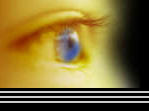Are Left Handed People More Creative?
By James Donahue
Statistically, they say left-handed people
comprise only about ten percent of the human population. Thus it may seem to be an odd coincidence that both 2008 presidential
candidates, Democrat Barack Obama and Republican John McCain are lefties.
The winner will not be the first southpaw
to gain occupancy of the White House. Former Presidents Bill Clinton and George H. W.. Bush are both left handed. Past left-handed
presidents were Ronald Reagan, Gerald Ford, Harry Truman, Herbert Hoover and James Garfield.
They are not alone. A fantastic number of
famous and infamous people throughout history also were left handed. They include Joan of Arc, Alexander the Great, Charlemagne,
Julius Caesar, Napoleon, King Louis XVI of France, England’s Queen Victoria, Fidel Castro, Henry Ford, Helen Keller,
Dr. Albert Schweitzer, Edward R. Murrow, John Dillinger, Lewis Carroll, Mark Twain, H. G. Wells, Judy Garland, Jimi Hendrix,
Babe Ruth, Oscar de la Hoya, M. C. Escher, Michelangelo, Raphael, Leonardo da Vinci, W. C. Fields, Robert Redford, Rod Steiger
and Oprah Winfrey.
Statistics show that left-handed people are
more likely to be schizophrenic, alcoholic, delinquent, dyslexic and suffer from Crohn’s disease, ulcerative colitis
and mental disabilities. They also are more likely to have accidents and die young.
There is a theory that left-handed people
also are highly successful in life because society challenges them to try harder. Because they don’t fit the right-handed
mold, they are considered “different,” and in a strange way, become outcasts from the group.
My mother, who was left-handed, was able
to write with her right hand. She said she was forced to write this way by her teachers in elementary school. She told of
horror stories of being singled out as a lefty, which made her “different.”
My wife, Doris, is ambidextrous, which means
she has the ability to use both right and left hands with equal ability. At least one of our children has inherited this trait.
French researchers calculate that a high
number of left-handed athletes who thrive in sports involving one-on-one contact do well because they learn early in left
how to deal with primitive combat.
Various researchers have tossed about theories
that left-handed people have the advantage of surprise when in combat. Boxers speak of the powerful “left hook,”
which we must assume is delivered by left-handed rivals.
When you examine the list of famed left-handers,
there is a realization that there also is an element of not only creative but intellectual superiority. Tests by Alan Searleman,
St. Lawrence University in New York, found that there are more left-handed people with IQ-s over 140 than right-handed people.
That Albert Einstein, Isaac Newton and Ben Franklin were left handed bears this out.
There is a theory, supported by scientific
research, which links right and left handedness with the dominant half of our bicameral brain. For some unexplainable reason,
there is a cross-over between the active part of the brain and the dominant side of our bodies. For example, most people are
left brained, which means they are right handed, and that the right eye is the dominant of the two eyes.
If this is correct, then left handed people
are right-brained. That is, the right half of the brain is in control of the body and probably in control of the way this
person thinks and behaves.
The brain, like the rest of our anatomy,
is literally divided by a big fold that divides it into two distinct parts. They are connected to each other by a thick cable
of nerves at the base of the brain called the corpus collosum.
Some years ago, Nobel Prize Winner Roger
Sperry conducted an interesting “split-brain” experiment on a patient that had the corpus collosum removed because
of lesions that were causing seizures. Sperry conducted a series of tests by isolating each half of this patient’s visual
and sensory receptors. What he learned was that the right hand and eye could name an object, but the patient could not explain
what it was used for. The left hand and eye could demonstrate an object’s use, but was unable to name it.
Further studies showed that various functions
of thought are physically separated and localized to a specific area on either side of the brain.
Sperry’s work revealed that there appear
to be two modes of human thought, identified as verbal and nonverbal, and represented by left and right hemispheres of our
brains. It appears that social behavior and our education system tends to neglect the nonverbal or “right brain”
form of intellect. Yet it is here where the creative genius appears to emerge.
What is worse, as most lefties can attest
to, modern society discriminates against people driven by the right hemisphere.

